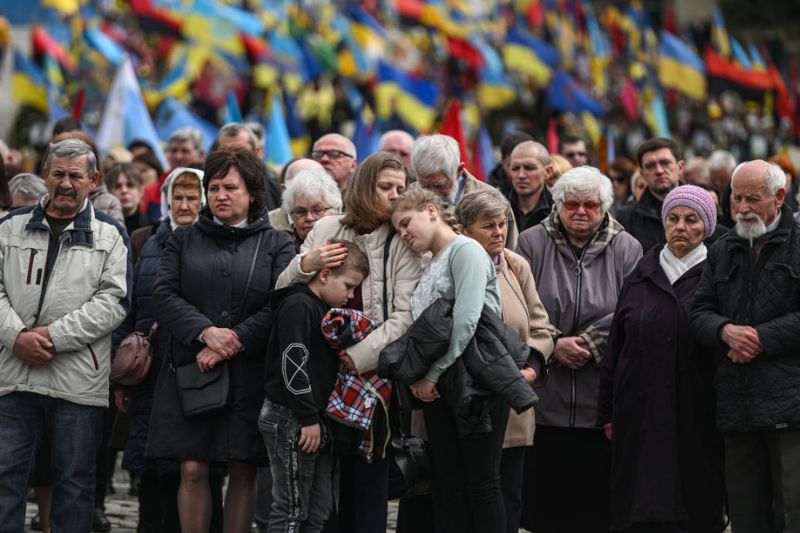Anzac Day is a day for the telling of stories. The central stories of the events in 1916 and of those who were directly and indirectly involved in them change little. But the telling of the stories differs from the year, reflecting the attitudes and the spirit of the day. The celebration of Anzac Day tells us as much about ourselves and our own world as it does about those present on the beaches then.

Some of the stories told each Anzac Day describe the experience of different wars, shared by former soldiers in marches and in the pub. Many stories are told through symbols that help civilians to reimagine the reality of war: through the solemnity of the dawn services for those who died in war, through the medals worn by soldiers and by the families of soldiers who have died, through the black and white photographs of distant battlefields and of family members who fought there, and through wartime diaries and poems.
Some of these stories rightly celebrate the courage and endurance of people who fought because their leaders believed war to be in Australia’s interests. Overwhelmingly, however, they are stories of the sadness of war. They tell of the anonymous deaths of young men obliterated by high explosives. They speak of the lasting grief of their families, children, wives and friends, of the traumatised and injured men who returned from war, of the lasting effect these had on the life of their families, and of a nation whose resources were diverted from flourishing to survival.
The way in which these stories are told depends each year on the national context and mood. Sometimes it has been rebellious. Many young people in the idealistic 1960s saw in Anzac Day the glorification of war and an occasion for old men to get drunk. They saw the same old men as responsible for the conscription of young men to fight in the Vietnam war that had nothing to do with Australia. Anzac Day and its stories were those of contention.
Earlier this century Anzac Day was seen as an expression of Australian identity, of young men going bravely to war. Young people were interested in what their ancestors had done, were interested in the weaponry, travelled to Anzac Cove, wrapped themselves in the Australian flag. The Anzacs were represented on recruiting posters for the military and on images of stony-faced young footballers channelling warriors for matches held on Anzac Day. Anzac Day was an expression of anxiety about identity, of patriotism, of the romance of war.
This year the mood is more serious. The images of the war in Ukraine, the possibility of the use of nuclear weapons and the tension with China have both destroyed any romance war might have had and have brought home the sadness and the suffering of those affected by it. At the same time the experience of COVID, of the fire and flood that are the first strokes of the lash of climate change, of economic hardship, and of weariness with culture wars, have subdued celebration. The stories of Anzac Day that resonate this year will be those of the people who have suffered and endured both in war and in its aftermath.
'Anzac Day is a day of remembering, of compassion for the people who were our ancestors caught in war. It is also a day of grieving for the people of Ukraine, of Myanmar and other nations caught in war. It is a memorial that says both We shall Remember and Never Again.'
Like Australia Day, Anzac Day has aroused controversy. This reflects the weight that the day has carried as an expression of Australian society which can unite all Australians. Australia Day cannot carry that weight. Its date makes it a symbol of European conquest that must create division. Anzac Day is a more malleable symbol, even though in its creation it was made to carry more weight than it could bear. It did not make Australia a nation — that had happened at Federation. It did not display uniquely Australian courage — both Australian and Turkish troops fought bravely. Nor did it display uniquely Australian lovableness — Australian larrikinism seems both exaggerated and was shown by soldiers of other nations. Nor did the campaign bind Australia lastingly to the British Empire. That bond cracked under its own weight.
More distinctively and fortunately, however, among events given national significance Anzac Day was a defeat that was blamed on the obtrusiveness of Australia’s allies and not on its enemies. Its memory was not accompanied by animus against the Turkish victors as defeats in war commonly are. The association with defeat, too, gave the day a quixotic tinge and a humility that left room for self-mockery in the midst of the resounding patriotic rhetoric that inevitably decorated the day. Anzac Day honoured the brave little battlers who gave everything in a contest that was unfairly loaded against them, the Collingwood footballers of their day.
That aspect of Anzac Day keeps turning our attention back to the little people, the victims of Gallipoli — the soldiers who died and who survived maimed in mind or body, their fathers, mothers, daughters, sons and fiancées whose lives were shaken by war, the small town communities who lost half of the youth that were their future.
Anzac Day is a day of remembering, of compassion for the people who were our ancestors caught in war. It is also a day of grieving for the people of Ukraine, of Myanmar and other nations caught in war. It is a memorial that says both We shall Remember and Never Again.
Andrew Hamilton is consulting editor of Eureka Street, and writer at Jesuit Social Services.
Main image: A woman comforts children during an outdoor mass for the fallen Ukrainian soldiers who died fighting against the Russian invasion during the Orthodox Easter Sunday at the field of Mars on April 16, 2023 in Lviv, Ukraine. (Omar Marques/Getty Images)